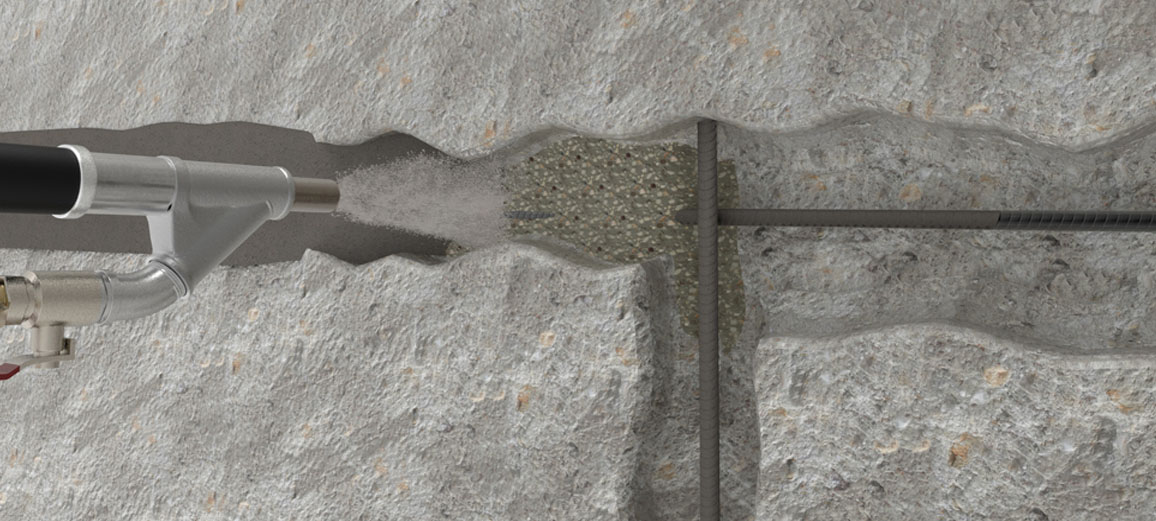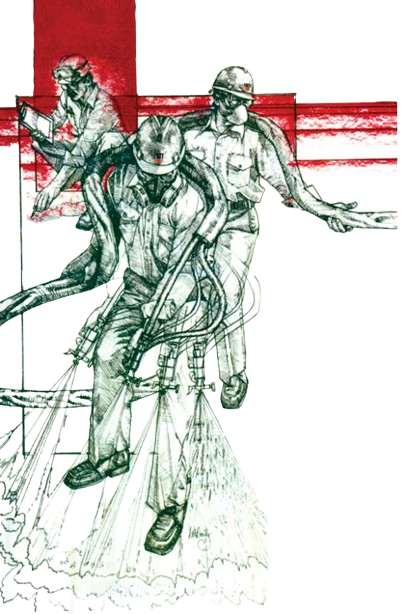Concrete repair is a process of restoring or fixing damaged or deteriorated concrete structures, such as buildings, bridges, roads, and parking structures. Over time, concrete can develop cracks, spalling, surface defects, and other issues due to factors such as freeze-thaw cycles, moisture intrusion, chemical exposure, and structural loads. Concrete repair techniques aim to restore the structural integrity, functionality, and aesthetics of the concrete while addressing the underlying causes of deterioration. Here are some common methods and techniques used in concrete repair:
- Surface Preparation: Proper surface preparation is essential for the success of concrete repair. This involves cleaning the damaged area to remove loose debris, dirt, oil, and contaminants. Surface preparation may also include mechanical methods such as sandblasting or grinding to remove deteriorated concrete and create a roughened surface for better adhesion of repair materials.
- Crack Repair: Cracks in concrete can be repaired using various techniques, including:
- Crack Injection: Epoxy or polyurethane resins are injected into cracks to fill and seal them, preventing water infiltration and further deterioration.
- Routing and Sealing: Cracks are widened (routed) to create a reservoir for sealant, which is then applied to fill and seal the crack.
- Stitching: Holes are drilled across the crack, and metal dowels or stitching ties are inserted and anchored in place to stabilize and reinforce the cracked concrete.
- Patch Repair: Patch repair involves filling and smoothing damaged or spalled areas of concrete using repair mortars or polymer-modified concrete mixes. Patching materials should be compatible with the existing concrete in terms of strength, shrinkage, and thermal expansion.
- Overlay Systems: Concrete overlays are applied over existing concrete surfaces to restore or enhance their appearance, durability, and functionality. Overlays can be made of polymer-modified concrete, epoxy, or polyurethane materials and may incorporate decorative finishes such as staining, stamping, or texturing.
- Reinforcement Repair: For concrete structures with corroded or deteriorated reinforcement, repair techniques may include:
- Cathodic Protection: Electrical currents are used to prevent further corrosion of reinforcing steel.
- Rebar Replacement: Damaged or corroded reinforcement is removed and replaced with new rebar, and the concrete is repaired around it.
- Protection and Coatings: Once repairs are completed, concrete surfaces may be protected with coatings or sealers to enhance durability and resistance to moisture, chemicals, UV radiation, and abrasion.
- Structural Strengthening: In cases where concrete structures have lost load-bearing capacity or need to meet increased design loads, strengthening techniques such as external post-tensioning, carbon fiber reinforcement, or steel plate bonding may be employed.

